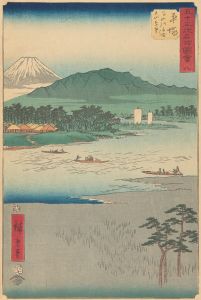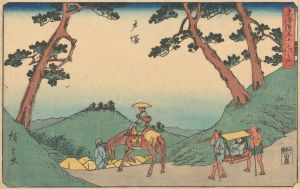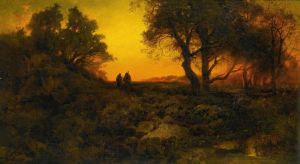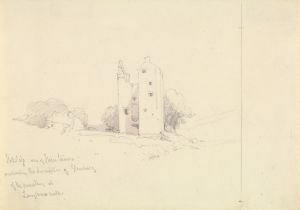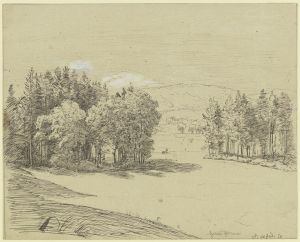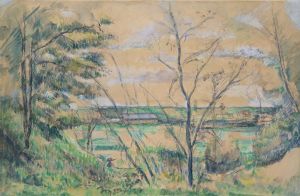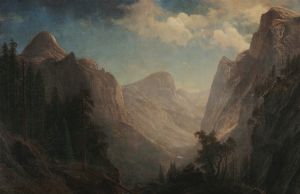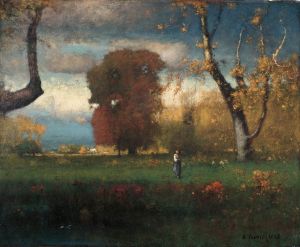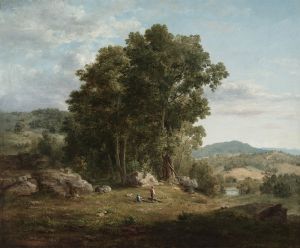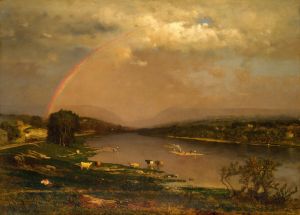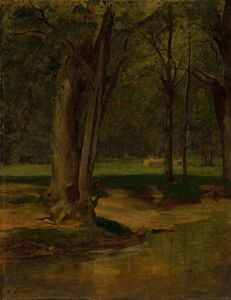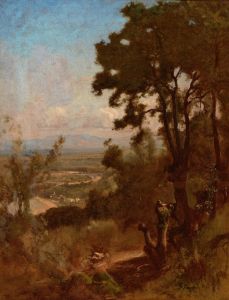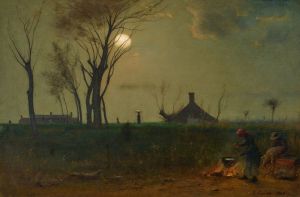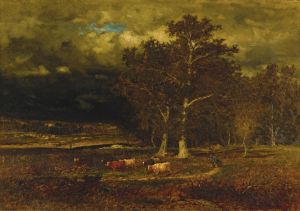
Hudson River Valley
A hand-painted replica of George Inness’s masterpiece Hudson River Valley, meticulously crafted by professional artists to capture the true essence of the original. Each piece is created with museum-quality canvas and rare mineral pigments, carefully painted by experienced artists with delicate brushstrokes and rich, layered colors to perfectly recreate the texture of the original artwork. Unlike machine-printed reproductions, this hand-painted version brings the painting to life, infused with the artist’s emotions and skill in every stroke. Whether for personal collection or home decoration, it instantly elevates the artistic atmosphere of any space.
George Inness (1825-1894) was an American landscape painter who is often associated with the Hudson River School, although his later work evolved towards a more personal and expressive style. One of his notable works is "Hudson River Valley," which exemplifies his mature period and his departure from the more detailed and realistic approach of his earlier career.
Inness was born in Newburgh, New York, and grew up in Newark, New Jersey. He initially trained as an engraver before turning to painting. His early works were influenced by the Hudson River School, a mid-19th century American art movement known for its romantic portrayal of the American landscape. However, Inness's style evolved significantly over his career, incorporating elements of the Barbizon School and later, a more spiritual and atmospheric approach.
"Hudson River Valley" captures the serene and bucolic landscape of the region, which was a popular subject for many artists of the time. The painting reflects Inness's interest in the interplay of light and atmosphere, as well as his philosophical and spiritual beliefs. Inness was influenced by the writings of Emanuel Swedenborg, a Swedish scientist, philosopher, and theologian, whose ideas about the spiritual world and the connection between the natural and the divine had a profound impact on Inness's work.
The painting is characterized by its soft, diffused light and harmonious composition. Inness often used a technique of glazing, applying thin layers of paint to create a luminous effect. This method allowed him to achieve a sense of depth and atmosphere, making the landscape appear almost ethereal. The use of warm, earthy tones and the careful attention to the effects of light and shadow are hallmarks of Inness's mature style.
Inness's approach to landscape painting was not just about depicting a specific place but about conveying a mood or feeling. He believed that art should evoke an emotional response and that the artist's role was to interpret nature rather than merely replicate it. This philosophy is evident in "Hudson River Valley," where the tranquil scene invites viewers to reflect and find a sense of peace and contemplation.
Throughout his career, Inness received numerous accolades and his work was widely exhibited. He was elected to the National Academy of Design in 1868 and continued to gain recognition both in the United States and abroad. His contributions to American art were significant, and he is often regarded as one of the foremost landscape painters of his time.
"Hudson River Valley" remains an important example of Inness's work and his ability to blend technical skill with a deep, almost mystical understanding of nature. The painting is a testament to his belief in the power of art to transcend the physical world and touch the spiritual. Today, Inness's works are held in major museums and collections, continuing to inspire and captivate audiences with their beauty and depth.





